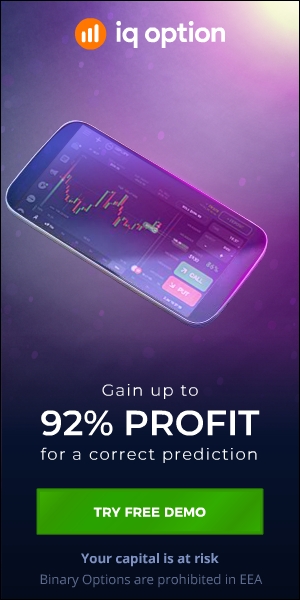“`html
The Benefits of Incorporating ETFs into Your Investment Portfolio
Exchange-Traded Funds (ETFs) have become increasingly popular among investors over the past few decades. They offer a unique blend of features that make them an attractive option for both novice and seasoned investors. This article delves into the key advantages of ETFs for your portfolio, providing a comprehensive understanding of why they might be a valuable addition to your investment strategy.
What Are ETFs?
Before diving into the advantages, it’s essential to understand what ETFs are. ETFs are investment funds that are traded on stock exchanges, much like individual stocks. They hold assets such as stocks, commodities, or bonds and generally operate with an arbitrage mechanism designed to keep trading close to its net asset value, though deviations can occasionally occur.
Key Advantages of ETFs
1. Diversification
Diversification is a fundamental principle of investing, aimed at reducing risk by spreading investments across various assets. ETFs offer an easy and cost-effective way to achieve diversification.
- Broad Market Exposure: ETFs can provide exposure to a wide range of asset classes, sectors, and geographical regions. For example, a single ETF can give you access to the entire S&P 500 index.
- Sector-Specific ETFs: If you want to focus on a particular sector, such as technology or healthcare, there are ETFs designed specifically for that purpose.
- International Diversification: ETFs can also offer exposure to international markets, allowing you to diversify beyond domestic investments.
2. Cost Efficiency
One of the most significant advantages of ETFs is their cost efficiency. They tend to have lower expense ratios compared to mutual funds, making them a more affordable option for many investors.
- Lower Management Fees: ETFs generally have lower management fees because they are often passively managed, tracking an index rather than actively managed by a fund manager.
- Reduced Transaction Costs: Since ETFs trade like stocks, you can buy and sell them at market prices throughout the trading day, potentially reducing transaction costs.
3. Liquidity
Liquidity refers to how easily an asset can be bought or sold in the market without affecting its price. ETFs are known for their high liquidity, which offers several benefits.
- Ease of Trading: ETFs can be bought and sold on stock exchanges throughout the trading day, providing flexibility and ease of access.
- Market Orders: You can place various types of orders, such as market orders, limit orders, and stop orders, giving you more control over your trades.
4. Transparency
Transparency is another significant advantage of ETFs. Investors can see exactly what assets are held within the ETF, which is not always the case with mutual funds.
- Daily Holdings Disclosure: Most ETFs disclose their holdings on a daily basis, allowing investors to know exactly what they own.
- Clear Pricing: The price of an ETF is determined by the market, providing real-time pricing information throughout the trading day.
5. Tax Efficiency
ETFs are generally more tax-efficient than mutual funds, which can be a significant advantage for investors looking to minimize their tax liabilities.
- In-Kind Redemptions: ETFs often use in-kind redemptions, which involve exchanging securities rather than cash. This process can help minimize capital gains distributions.
- Lower Turnover: Because many ETFs are passively managed, they tend to have lower turnover rates, resulting in fewer taxable events.
6. Flexibility
ETFs offer a high degree of flexibility, making them suitable for various investment strategies and goals.
- Short Selling: Investors can short sell ETFs, allowing them to profit from declines in the market.
- Options Trading: Many ETFs have options available, providing additional strategies for hedging or speculating.
- Dividend Reinvestment: Some ETFs offer dividend reinvestment plans (DRIPs), allowing investors to automatically reinvest dividends to purchase more shares.
7. Accessibility
ETFs are accessible to a wide range of investors, regardless of their investment size or experience level.
- Low Minimum Investment: Unlike some mutual funds that require a high minimum investment, ETFs can be purchased in small quantities, making them accessible to individual investors.
- Ease of Purchase: ETFs can be bought and sold through most brokerage accounts, making them easy to access for most investors.
Comparing ETFs to Other Investment Vehicles
To fully appreciate the advantages of ETFs, it’s helpful to compare them to other common investment vehicles, such as mutual funds and individual stocks.
| Feature | ETFs | Mutual Funds | Individual Stocks |
|---|---|---|---|
| Diversification | High | High | Low |
| Cost Efficiency | High | Medium | Varies |
| Liquidity | High | Medium | High |
| Transparency | High | Medium | High |
| Tax Efficiency | High | Medium | Varies |
| Flexibility | High | Medium | High |
| Accessibility | High | Medium | Varies |
Potential Drawbacks of ETFs
While ETFs offer numerous advantages, it’s essential to be aware of potential drawbacks to make an informed investment decision.
- Trading Costs: Although ETFs generally have lower expense ratios, frequent trading can incur significant brokerage fees.
- Market Risk: Like all investments, ETFs are subject to market risk, and their value can fluctuate based on market conditions.
- Tracking Error: Some ETFs may not perfectly track their underlying index, leading to tracking errors.
Conclusion
ETFs offer a range of advantages that make them a valuable addition to any investment portfolio. Their diversification, cost efficiency, liquidity, transparency, tax efficiency, flexibility, and accessibility make them an attractive option for investors of all levels. However, it’s essential to consider potential drawbacks and conduct thorough research before making investment decisions.
In summary, ETFs provide a versatile and cost-effective way to achieve broad market exposure, making them a compelling choice for building a diversified and resilient investment portfolio.
Q&A Section
- What is an ETF?
An ETF, or Exchange-Traded Fund, is an investment fund that is traded on stock exchanges and holds assets such as stocks, commodities, or bonds. - How do ETFs provide diversification?
ETFs offer diversification by providing exposure to a wide range of asset classes, sectors, and geographical regions, often through a single investment. - Why are ETFs considered cost-efficient?
ETFs are cost-efficient due to their lower management fees and reduced transaction costs compared to other investment vehicles like mutual funds. - What makes ETFs highly liquid?
ETFs are highly liquid because they can be bought and sold on stock exchanges throughout the trading day, providing flexibility and ease of access. - How are ETFs more tax-efficient than mutual funds?
ETFs are more tax-efficient due to in-kind redemptions and lower turnover rates, which result in fewer taxable events. - Can ETFs be used for short selling?
Yes, investors can short sell ETFs, allowing them to profit from declines in the market. - What are some potential drawbacks of ETFs?
Potential drawbacks of ETFs include trading costs, market risk, and tracking errors. - How do ETFs compare to mutual funds in terms of transparency?
ETFs generally offer higher transparency as they disclose their holdings on a daily basis, whereas mutual funds may not provide such frequent disclosures. - Are ETFs accessible to individual investors?
Yes, ETFs are accessible to individual investors due to their low minimum investment requirements and ease of purchase through most brokerage accounts. - What should investors consider before investing in ETFs?
Investors should consider potential drawbacks, conduct thorough research, and evaluate how ETFs fit into their overall investment strategy before investing.
“`


